A Barlow lens is an optical tube containing lens elements that diverge the light passing through them.
Named after English physicist and mathematician Peter Barlow, Barlow lenses add a second lot of magnification to each of your eyepieces while maintaining the existing eye relief.
The Barlow lens is an optical tube containing lens elements that diverge light passing through.
If one is inserted into the light path of any type of scope, the effective focal length of the scope is increased.
You calculate the magnification of a telescope by dividing its focal length by the focal length of the eyepiece.
Therefore, an increase in the effective focal length of the telescope results in an increase in magnification.
For example, this means a 17mm eyepiece will behave like a 5.6mm eyepiece. As a bonus, the increase in the scope’s focal ratio can improve image sharpness, but only under ideal conditions.
Inserting a Barlow lens into the light path of any type of telescope increases the effective focal length, usually by doubling it, although some designs have an even greater effect.
Using a Barlow lens effectively doubles the number of eyepieces that you have in your collection.
Barlow vs Powermate: what's the difference?
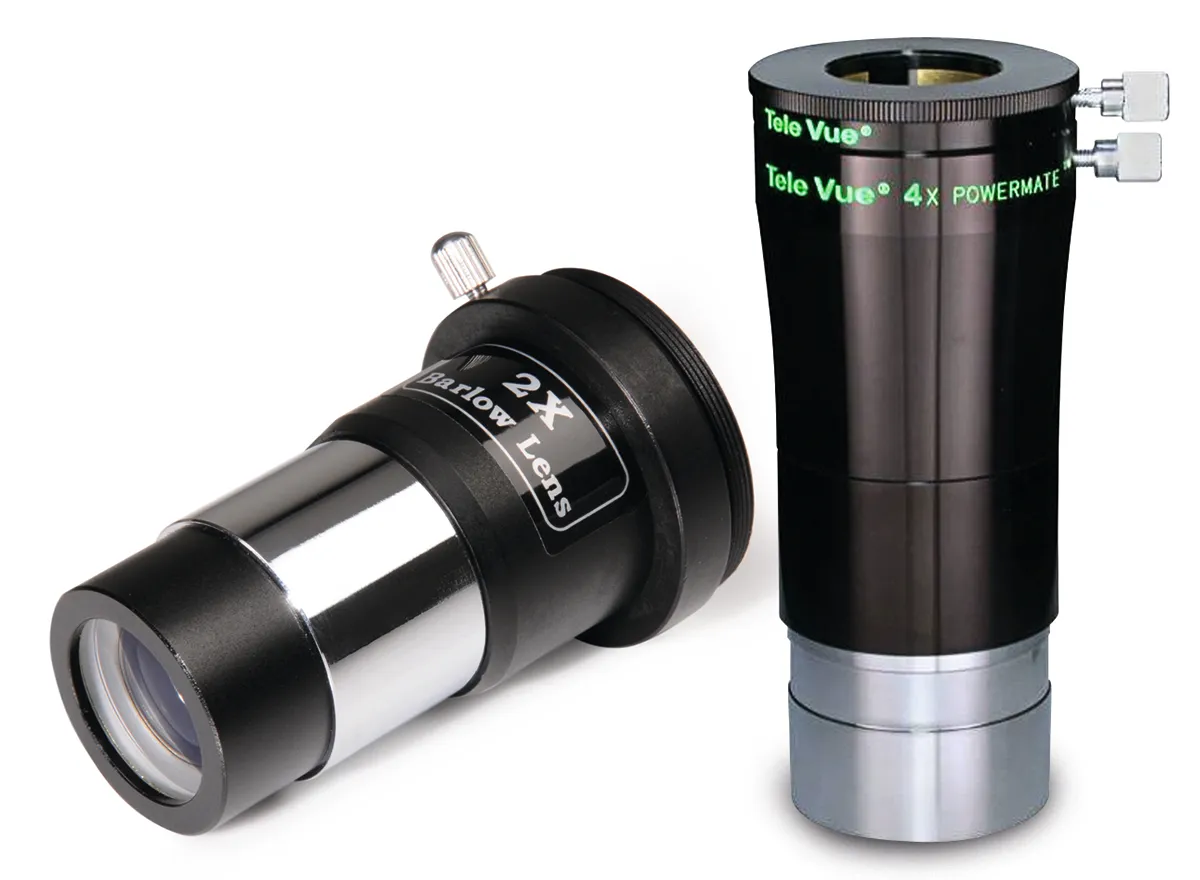
Both Barlow lenses and Powermates act as image amplifiers by increasing the effective focal length of your telescope, thereby increasing the magnification achieved with any eyepiece.
Typical Barlows have a magnification of 2x and are composed of two or sometimes three elements in a single group, forming a negative lens.
This lens produces a diverging ray of light which, as well as magnifying the view, moves the eyepiece’s exit pupil farther outwards, thereby increasing the eye relief.
This effect is not too noticeable with short to medium focal length eyepieces, but it is more significant in longer focal length eyepieces as it can lead to vignetting if the eyepiece lenses aren’t wide enough to let the full width of the altered light cone through.
Eyepiece to Barlow lens spacing has a significant effect on the magnification achieved.
A Powermate is a telecentric design with four lenses in two doublet groups: a smaller negative lens and a larger positive lens arranged so that light exits the Powermate in parallel rays.
This design ensures that the original eye relief of the eyepiece remains unchanged, making it more suitable for longer focal length eyepieces and avoiding the risk of vignetting.
A Powermate’s magnification remains fairly constant irrespective of where the eyepiece is positioned.
From a lunar and planetary imaging point of view, Powermates are the better choice as they can be stacked to produce high levels of magnification.
7 of the best Barlow lenses
1
Celestron X-CEL LX 3x Barlow
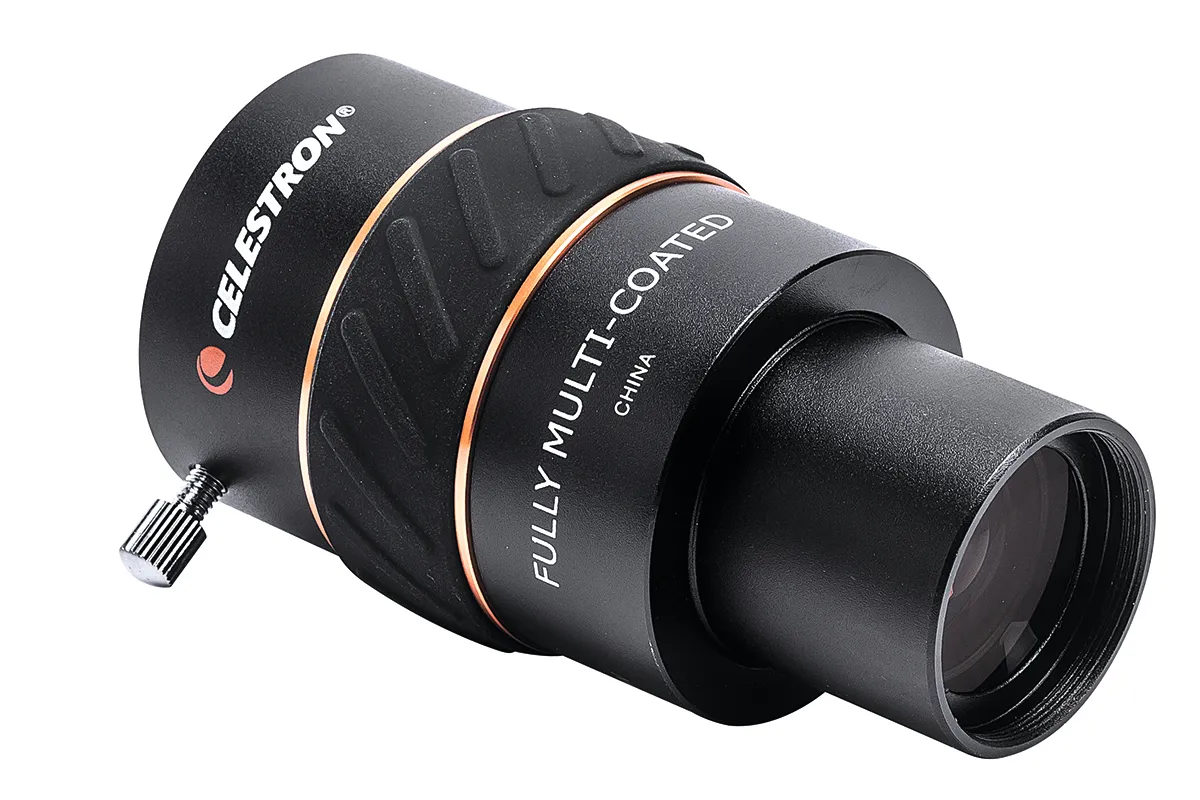
Celestron’s X-CEL LX 3x Barlow is designed to be the perfect companion to the company’s range of X-Cel LX eyepieces, with a matching rubber grip pattern, copper-coloured banding and an all black silk finish.
The fully multicoated, three-element design is the second lightest in this group at 142g, and the lens is the second smallest in terms of length, but it has a solid, well constructed feel to it that gives plenty of confidence in use.
The eyepiece barrel has a plain profile, which makes inserting it into a star diagonal a quick process indeed.
Its anti-marring brass compression ring is smooth and the internal micro-baffles, finished in a matt black, complete a well-thought-out design.
Views of Venus were excellent, and on the Moon plenty of sharp detail was visible. We very much enjoyed the view of the Orion Nebula’s Trapezium stars, which were very sharp and clear.
2
Meade #126 Barlow lens
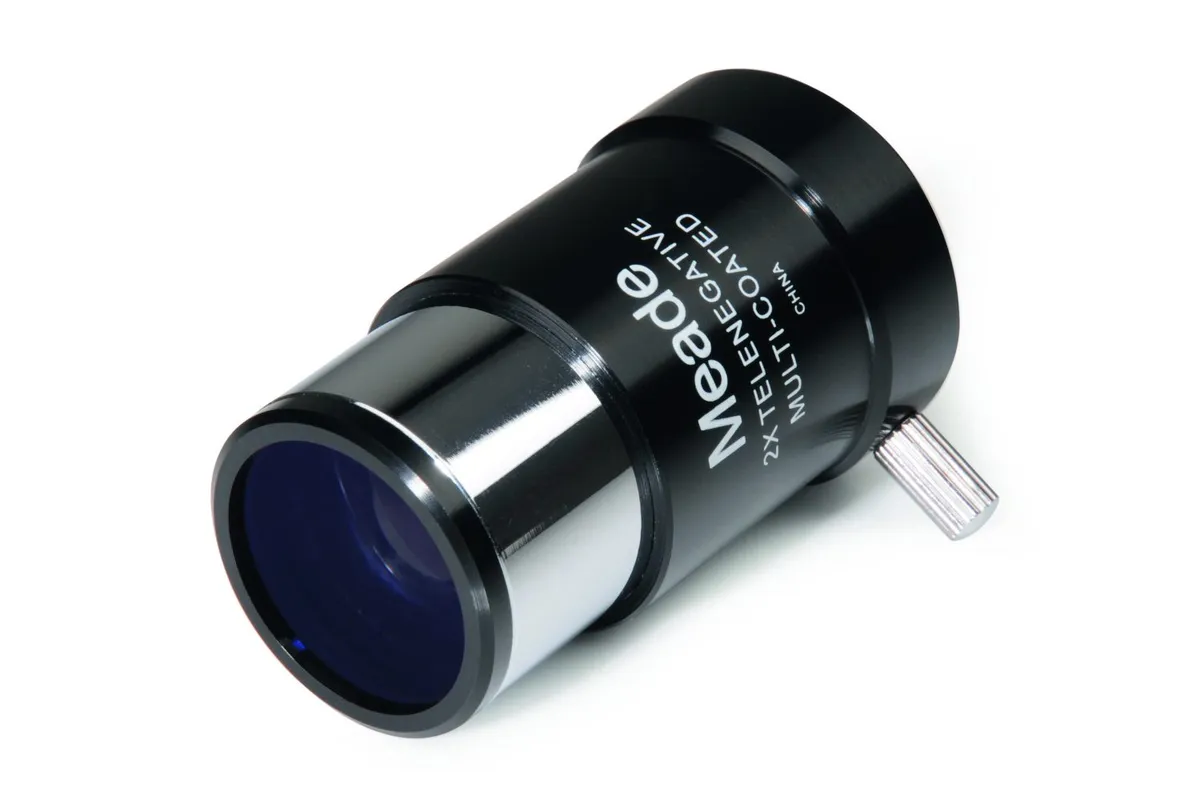
For a lens that appears small, the #126 2x Barlow packs a punch. It can be used with other instruments but works best on short focus refractors and reflectors.
The #126 is 65mm long, 42mm of which extends from the focuser, helping reduce the risk of knocking it in the dark.
Internal baffling is good and a double element lens is multicoated to reduce glare.
Views through the lens were excellent. Star Procyon was sharp across the whole view with our 26mm eyepiece, although we did notice the slightest of distortions at the edge.
We turned to Orion's Sword and achieved splendid views with our our 26mm and 10mm eyepieces in the Barlow. We were able to observe the E and F stars in the Trapezium Cluster.
With our 26mm eyepiece in the Barlow we achieved a 1.25º field of view: with the Orion Nebula in the centre we could fit double star Struve 747 near the edge of the view.
Read our full Meade #126 Barlow lens review.
- Buy now from Orion Telescopes,
3
Tele Vue 2x Barlow lens
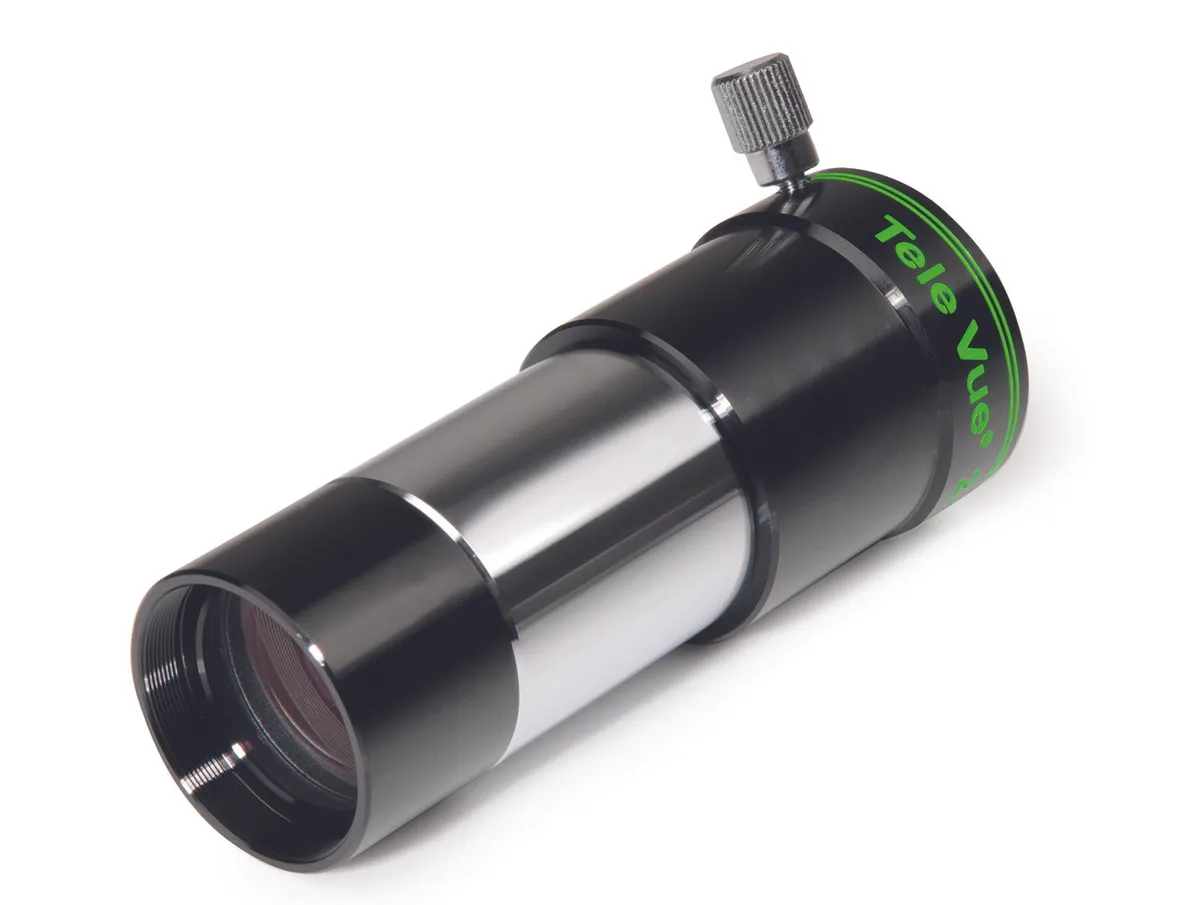
This 2x Barlow measures 97mm and just 41mm extends out of the focuser when fitted.
The lower lens housing is threaded to accept standard filters and the screw for holding the eyepiece doesn't unscrew the whole way, meaning it shouldn't fall out and get lost in the dark.
We also like the brass compression ring that holds the eyepiece firmly in place and, unlike a screw, won't cause damage to eyepiece barrels.
We found the view to be very impressive, with no distortion near the edges of the field.
We placed double star Iota Orionis at the edge and were able to observe its companion without much efford.
Using averted vision with our 10mm eyepiece, we saw the extra two stars in the Trapezium Cluster
The 10mm with Barlow gave good views of M82 and M1. This is a great performer.
Read our full Tele Vue 2x Barlow lens review.
- Buy now from B&H,Orion Telescopes
4
Altair Lightwave Premium 3x flat-field tele extender
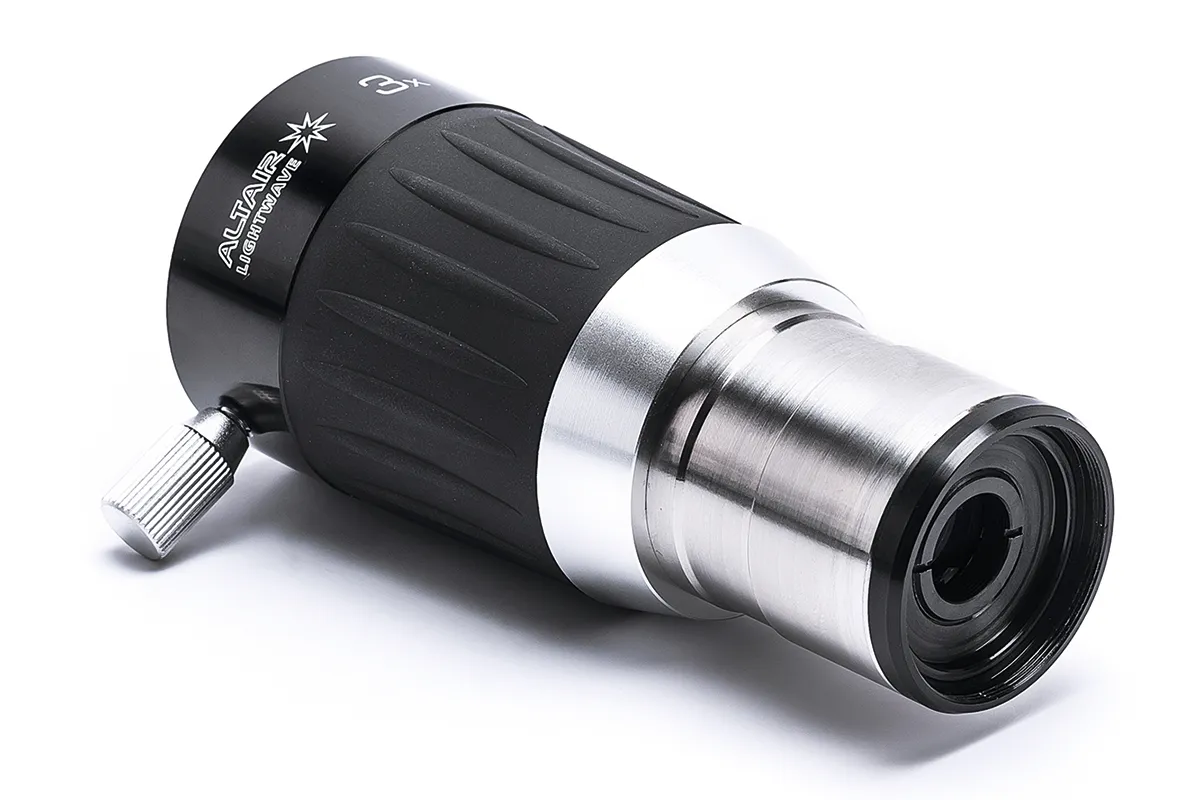
Altair’s Lightwave Premium 3x Barlow has a four-element lens design. It has a middling weight of the lenses reviewed at 165g, and the body is elegantly designed, with a silver undercut lens barrel and chunky rubber grip.
The eyepiece holder has an anti-marring brass compression ring and a single bolt to retain an eyepiece.
The soft rubberised material of the dust caps for both barrel and eyepiece holder made for a pleasant change from plastic inserts.
The green-tinged multicoating on the lens surfaces was evenly applied and micro-baffles were easily visible within.
This Barlow gave excellent views of Venus during moments of good seeing despite the planet’s low altitude.
Although observing conditions generally were not good, the Lightwave Premium acquitted itself very well.
- Buy now from Altair Astro, Harrison Telescopes
5
Explore Scientific 3x Barlow Focal Extender
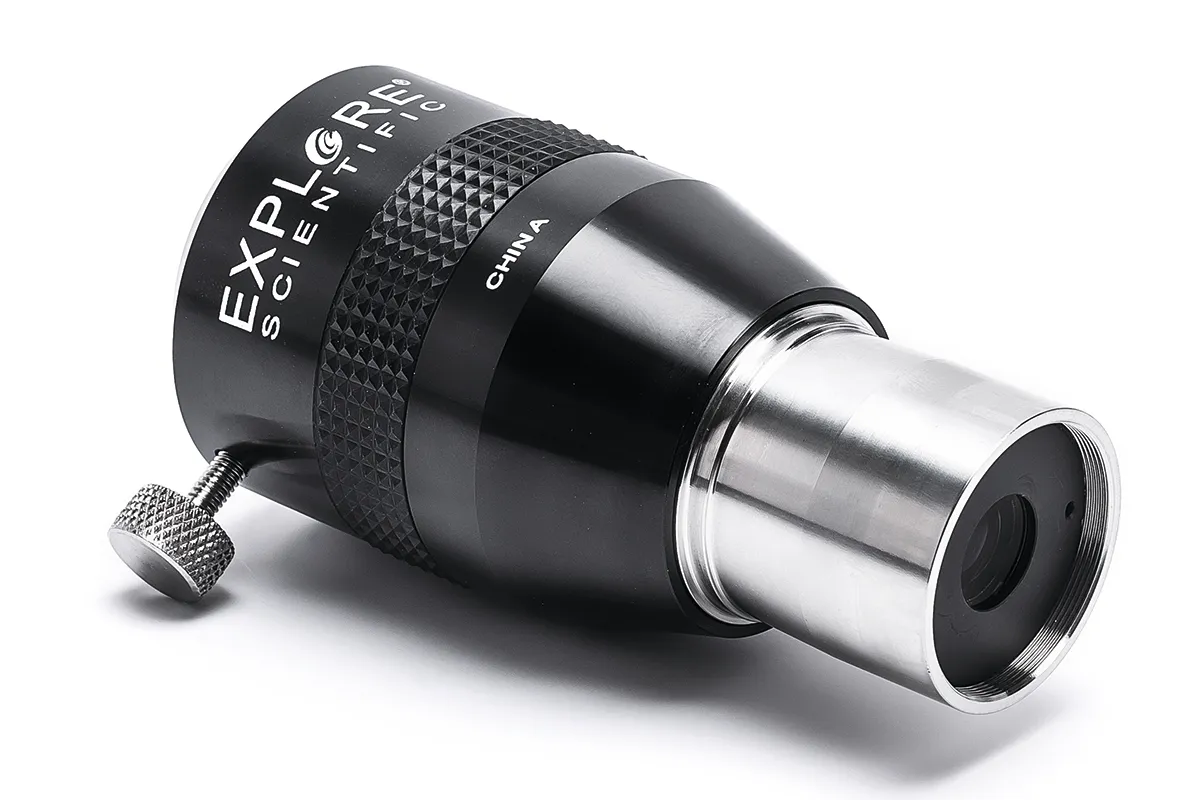
Like all Explore Scientific products, the 3x Barlow Focal Extender is supplied in a most attractive retail box.
At 251g it is certainly heavy, but it does have a purposeful heft to it.
It is elegantly designed with a conical top and a tapered lens barrel for secure attachment, and its centre is neatly wrapped with a simple patterned rubber grip to make it safe to handle even when wearing gloves.
The beautifully applied, green-tinged multicoating on its three lens elements gives it an air of quality, and we particularly liked the ease of insertion into our star diagonal afforded by the barrel design.
We also felt that of all the Barlows we've tried with a brass compression ring, this was the smoothest for inserting our 17mm undercut eyepiece, giving an almost airtight seal even before we tightened the locking bolt.
This excellent lens delivered great views of the Trapezium stars at the heart of the Orion Nebula with our 17mm eyepiece.
- Buy now from B&H
6
Orion Tri-Mag 3x Barlow
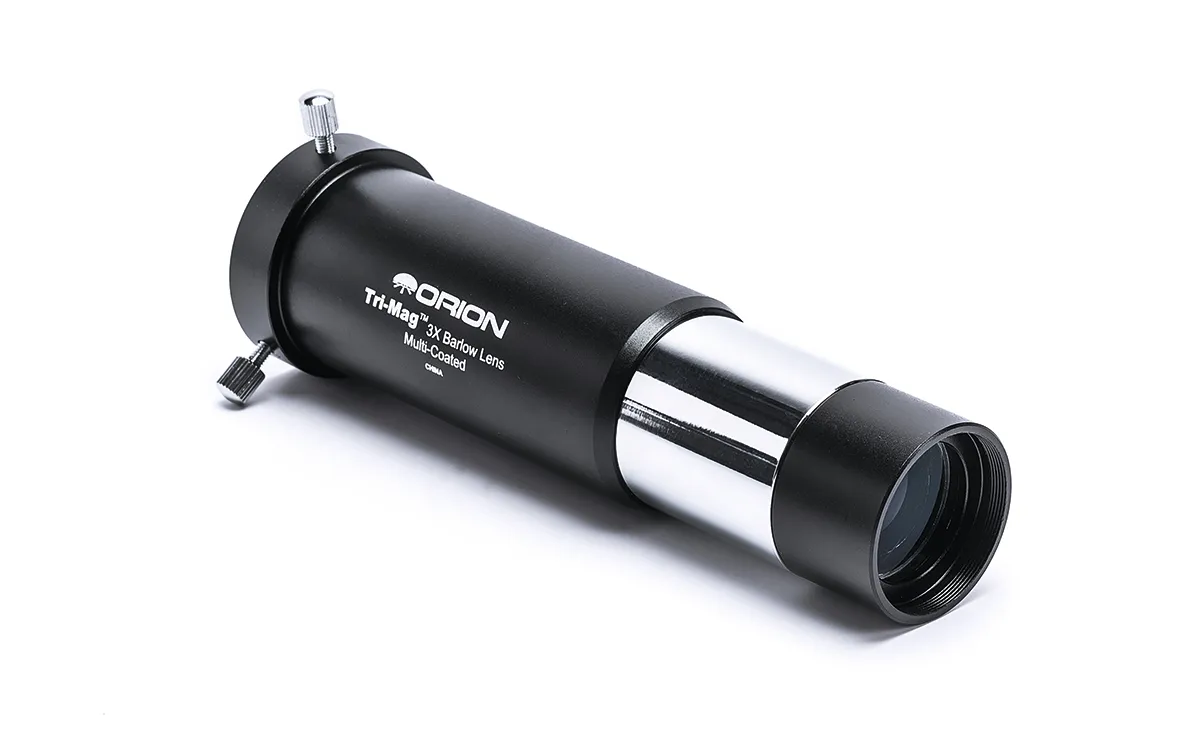
The Tri-Mag 3x Barlow is a simple design neatly finished in a black silk with a plain, mainly chrome, 1.25-inch barrel measuring 139mm.
The two lens elements are housed in a removable barrel end.
Displaying a green tinge, the multicoated lens surfaces are blemish free, and the long body possesses micro-baffles with a good matt black finish throughout its length.
There are two retaining thumbscrews to hold the eyepiece in place, but there is no anti-marring compression ring.
However, if you are using eyepieces with a safety undercut you might well feel that this is a bonus, as this type of eyepiece can easily become stuck on some compression rings, which can be frustrating.
This Barlow lens required only a tiny tweak to the focus originally set using just our 17mm eyepiece.
Our views of Venus were perhaps a little soft with this Barlow lens in comparison with others, but early morning lunar detail was enjoyable and clear.
7
Sky-Watcher three-element 3x Barlow
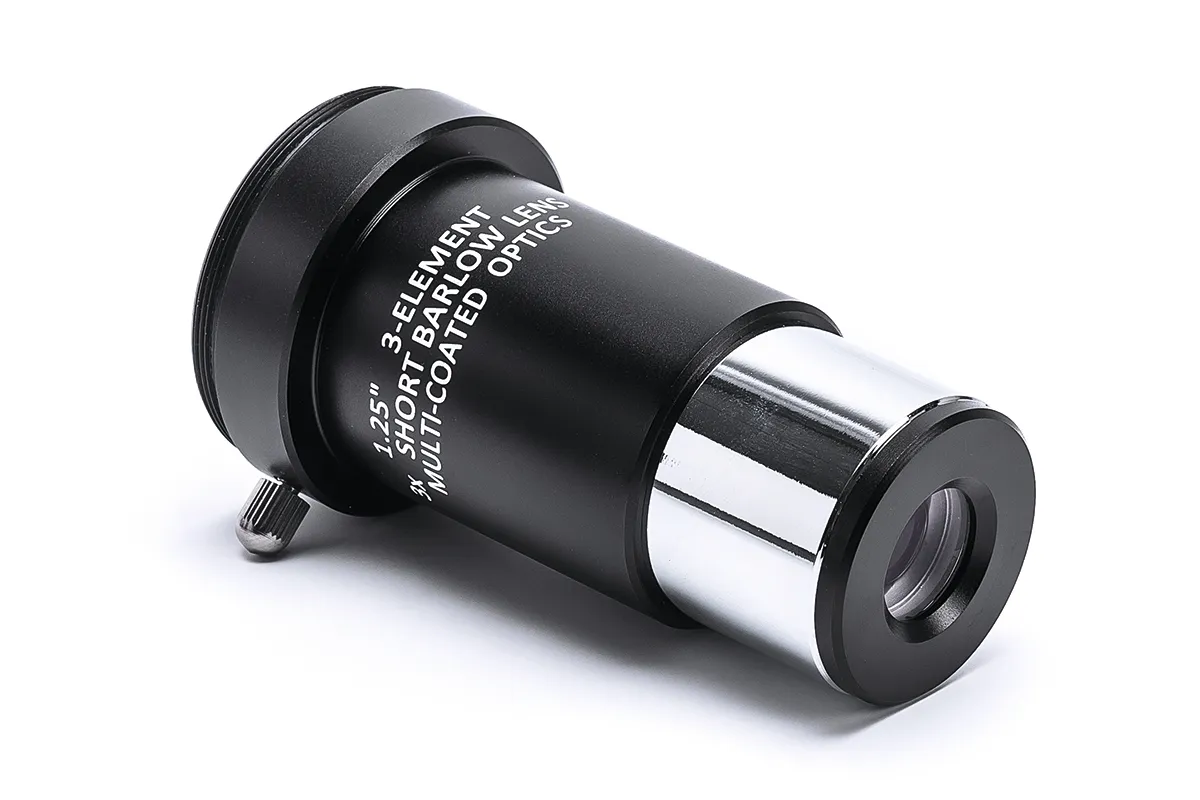
With a length of 83mm and a weight of 108g, the Sky-Watcher 3x Barlow is short and light.
Simply designed with a silk finish and plain chrome barrel, this is the only Barlow that incorporates a male T-thread so you can attach a camera.
Immediately below the T-thread collar there is a single thumbscrew for retaining eyepieces.
There is no anti-marring compression ring, although, depending on your eyepiece barrel type, this may be considered as an advantage.
This three-element multicoated design places the lower lens element at the very base of the barrel, meaning it does not include a filter thread.
Inserting this Barlow lens in the light path was easy and required a small amount of refocusing.
Lunar observations in the early morning, when the seeing was at its best, gave most enjoyable views of the lunar surface, with sharp detail on the terminator.
- Buy now from eBay
